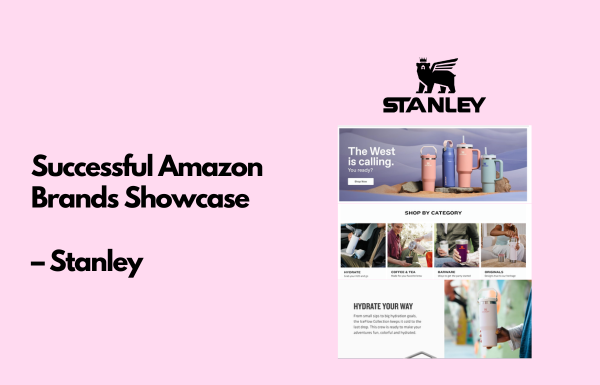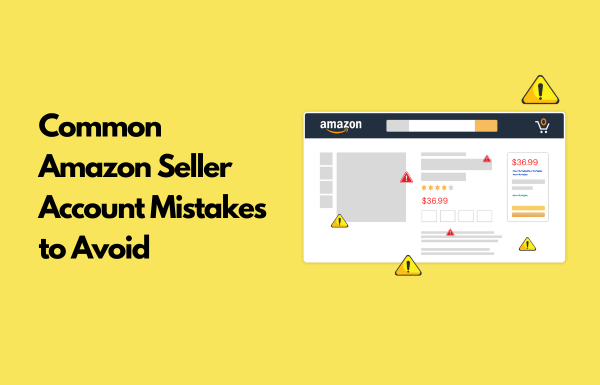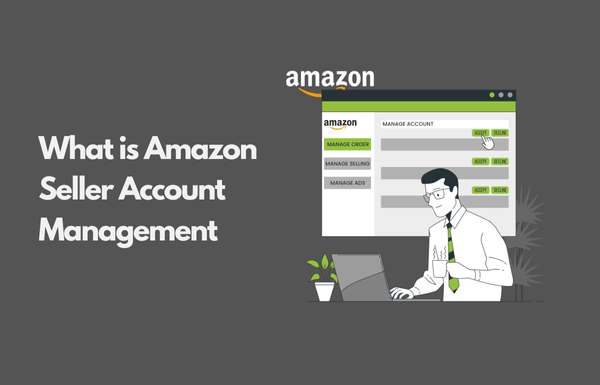Selling in Amazon’s Home & Kitchen category is more competitive than ever, with lookalike products, price-sensitive buyers, and hundreds of sellers fighting for attention. So yes, success here takes more than just having a well-designed product.
Let’s explore how Stanley went beyond product listings to build a store that sells effortlessly and serves as an Amazon seller inspiration.
1. Stanley – Amazon Brand Store (or Storefront)
Visual design of your Amazon Storefront shapes how shoppers feel about your brand before they ever click “Add to Cart”. And Amazon’s design flexibility gives brands a chance to move beyond product grids to te
You need smart execution and an Amazon store setup that turns interest into purchases.
Few brands have cracked the code, and one of them is Stanley, a standout example of Amazon Success for Kitchen Storage and Organization Category.
Today, Stanley has transformed its Amazon presence into a high-converting, brand-led storefront that not only sells but also builds trust. It’s a perfect inspiration for sellers who want to turn their Amazon store into a seamless, story-driven experience.
In this edition of our Successful Amazon Brand Showcase Series, we break down what Stanley is doing right and how their strategy serves as a playbook for other brands aiming to win in the Home & Kitchen space.
In this successful Amazon brand showcase of Stanley, we’ll explore the key elements behind their Amazon success for Kitchen Storage and Organization and understand the strategies that actually move the needle.
We’ll look at how Stanley nails five critical areas:
- Brand Store Design & Navigation
- Product Listings & SEO
- A+ Content That Connects
- Strategic Advertising
Tell a story.
Take Stanley, for example. Their Storefront opens with a bold banner that reads “The West is Calling”, paired with their signature tumblers and bottles in soft hues. It’s a quiet nod to their roots in the wild outdoors, while also speaking to modern routines and everyday adventures.
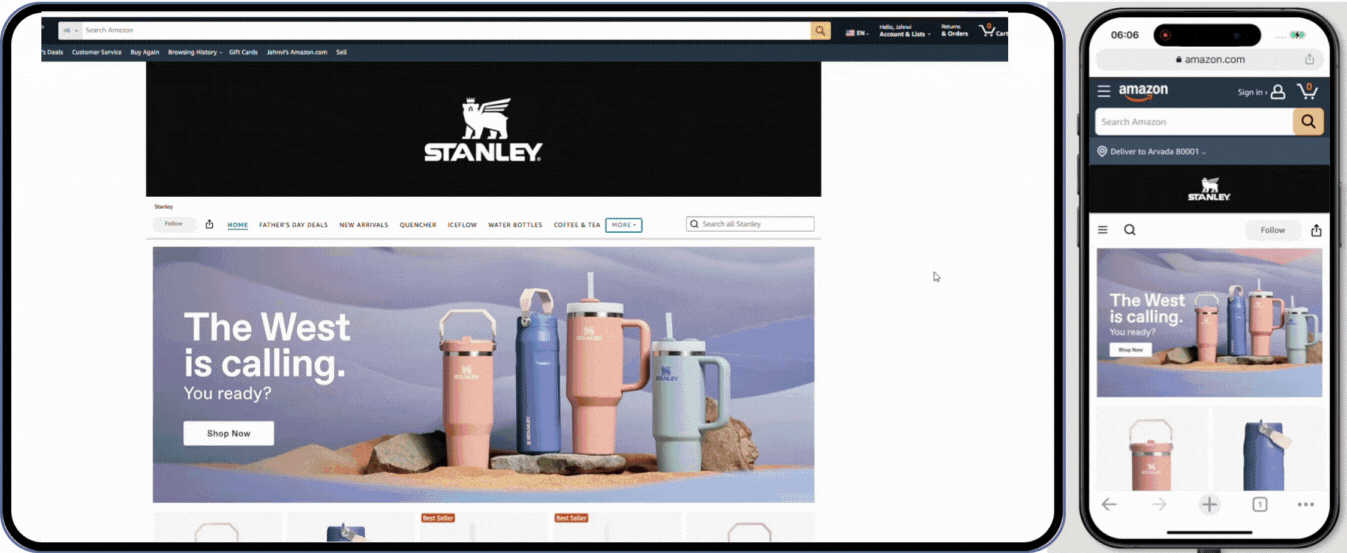
The reason behind Stanley’s success is the experience it offers. Every detail, from the trending hues to the way the bottles are photographed, reflects how hydration fits into your everyday life.
Stanley gets that everyone’s day looks a little different, and their focus on hydration essentials is about supporting you, no matter what that day brings. It’s more than a display, but a curated mood, a rhythm, a space that feels like it was made just for you.
Let us analyze all the elements that make it work and contribute to Amazon Success for Kitchen Storage and Organization Category.
(a) Visual Design
Stanley’s visual design is a take-it-anywhere branding that leads to their success in the Kitchen Storage and Organization Category, similar to private label products.
Take a look at the sleek black banner featuring the iconic white Stanley logo and mythical bear “Stan”. It’s more than just branding, but a 105-year heritage that tells a story of campfires, legendary tales, and outdoor essentials that are built to last.

The bear-in logo isn’t just decorative; it’s Stanley’s way of saying, “We’re waiting for your next adventurous story.
Stanley’s photography does more than just showcase.
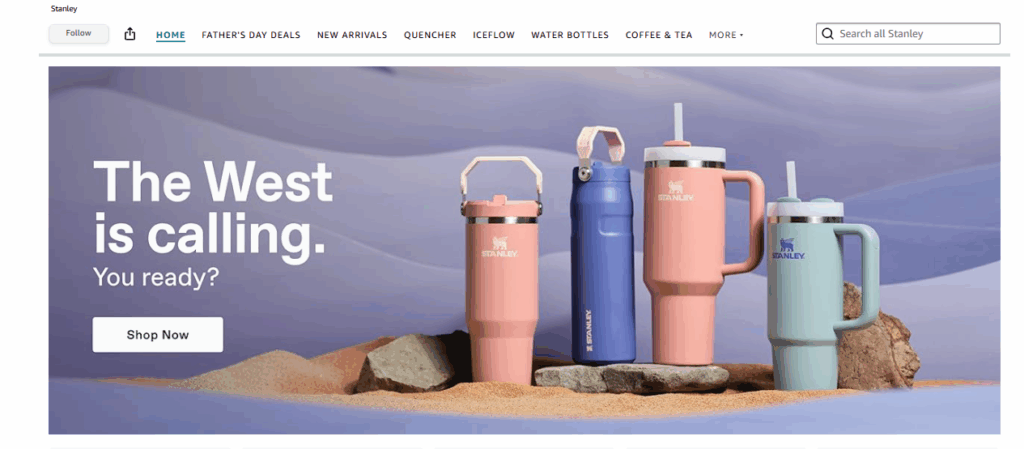
Instead of a plain white background, you will see tumblers placed in sandy dunes with mountains in the distance. It instantly puts you in the scene, making you feel like this isn’t just a bottle, but part of your next great adventure.
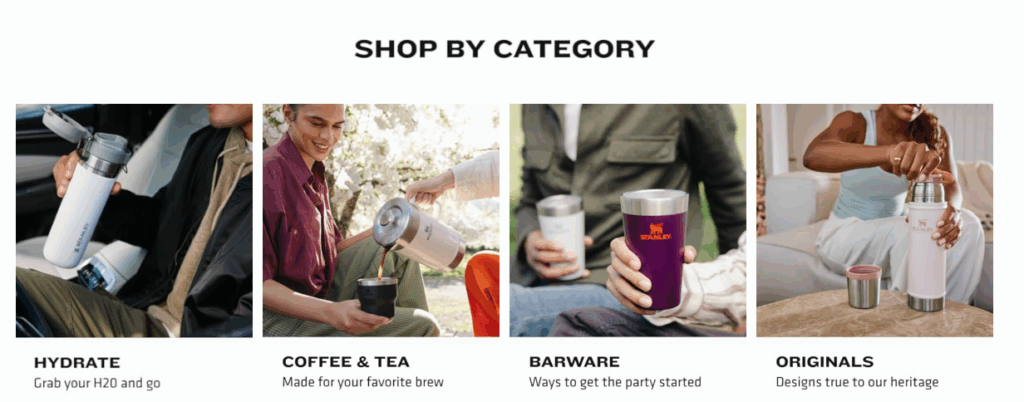
The thoughtfully curated color scheme of the storefront creates a sense of visual harmony that makes the storefront feel less like a product page and more like flipping through a premium outdoor magazine, showcasing high-demand products.
(b) Navigation & Amazon Categories Organization
If your Amazon Storefront doesn’t make it easy for people to find what they’re looking for, you’re losing sales. It’s that simple. Because when customers can browse your store smoothly and get what they need easily, they’re more likely to stay longer, explore more, and make a purchase.
Thus, good navigation isn’t just about keeping your store organized, but it plays a key role in driving conversions and enhancing profit margins.

Stanley’s navigation is created smartly. You can see that just by looking at how they have set up their store. Right at the top, they have a row of easy-to-spot categories that include Quencher, IceFlow, Coffee & Tea, and Water Bottles.
Instead of just listing things by their technical names or features, Stanley groups their products by how you’d use them in your daily life. For example, you’ll see sections like “QUENCHER,” “ICEFLOW,” and “WATER BOTTLES”. These names match what you might do, like drinking something to cool down on a hot day or sipping coffee when it’s cold outside.
This way, shopping for a Stanley product feels more personal and easier to understand.
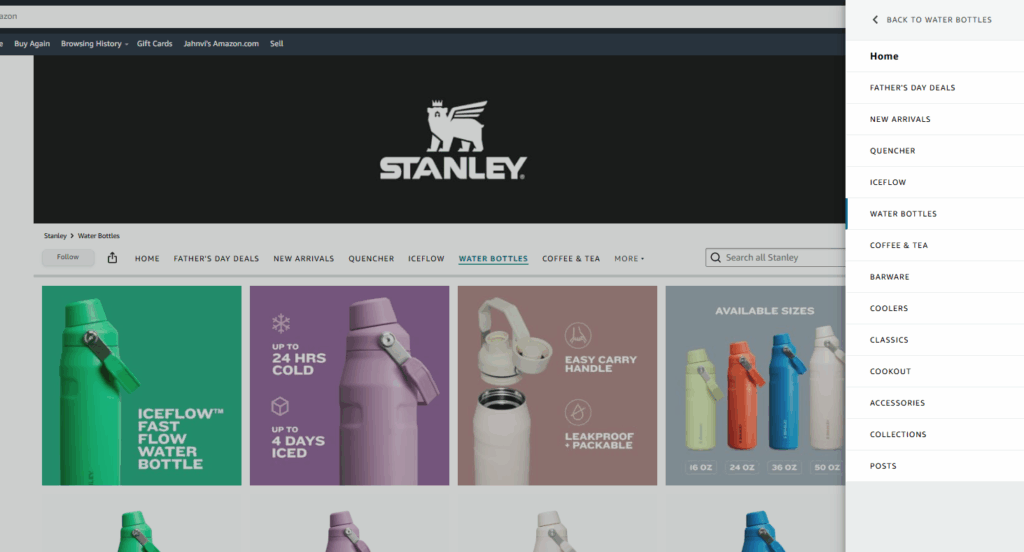
Look at the way they prioritize “FATHER’S DAY DEALS” and “NEW ARRIVALS” right in the main navigation. This shows they understand seasonal shopping patterns and the importance of freshness in their product lineup.
Their expanded menu goes deeper into profitable Amazon categories like “BARWARE,” “COOKOUT,” and “CLASSICS,” making it easy for customers to shop by occasion or personal preference.
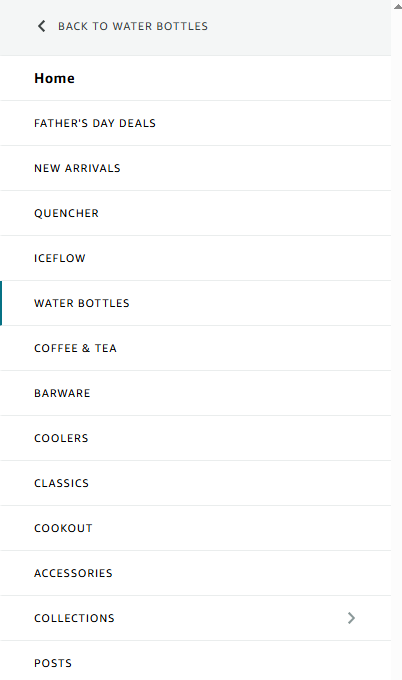
And the “COLLECTIONS” section is especially clever and demonstrates advanced Amazon success for kitchen storage and organization category tactics, a strategy employed by profitable sellers. As it features curated lists highlighting special themes or new arrivals, almost like a handpicked selection for different tastes or seasons. Making it easier for shoppers to easily find the product that matches a particular vibe, occasion, or trend, without having to filter everything separately.
(c) Content Personalization
Modern Amazon shoppers expect experiences customized to their interests and shopping behavior. That general content gets ignored, while personalized experiences drive engagement and conversions.
Stanley excels at creating content that feels personally relevant to their diverse customer base. Their “SHOP BY CATEGORY” section is a perfect example of lifestyle-based personalization.
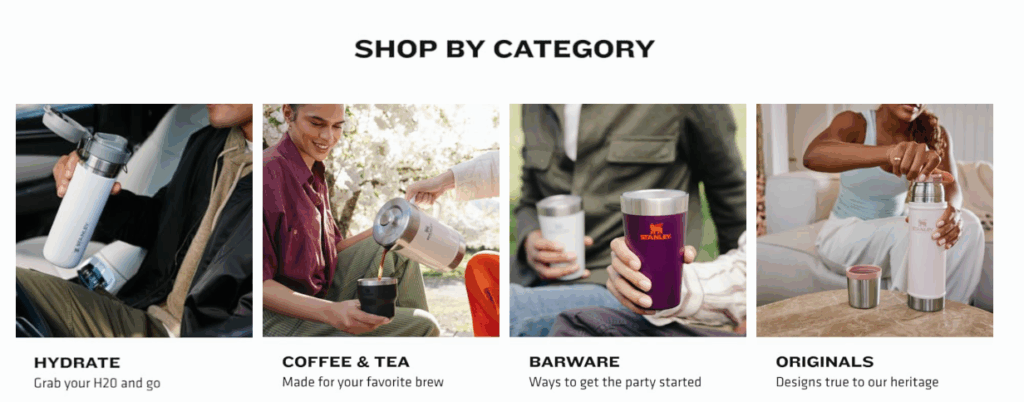
Each category speaks to a different type of Stanley customer, catering to a broad range of preferences:
- “HYDRATE” targets the fitness and outdoor enthusiasts with “Grab your H20 and go”
- “COFFEE & TEA” appeals to daily commuters and coffee lovers with “Made for your favorite brew.”
- “BARWARE” captures the entertaining crowd with “Ways to get the party started”
- “ORIGINALS” attracts heritage and authenticity seekers with “Designs true to our heritage”
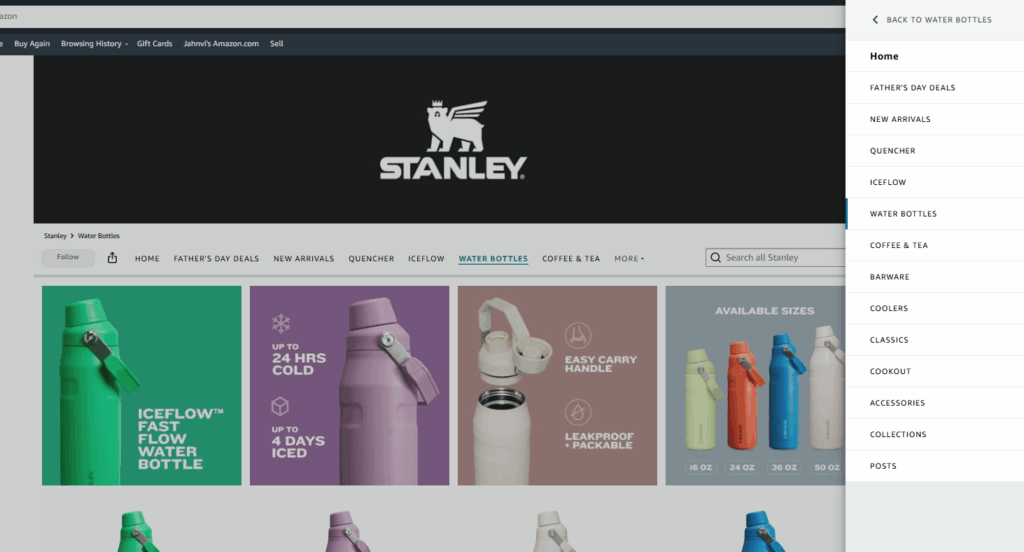
Their Collections strategy is very sophisticated as they create exclusive, limited-time groupings, similar to what is often found in the personal care category, that make customers feel like they’re accessing something special.
The “EXCLUSIVE OUT WEST COLLECTION” ties directly back to their adventure branding, while “EXCLUSIVE SPRING WATER BOTTLES” capitalizes on seasonal refresh energy. This exclusivity strategy is fundamental to Amazon success for kitchen storage and organization category, which is often highlighted as one of the most profitable product categories.
This kind of setup doesn’t just help, it convinces people to buy.
It reduces decision fatigue, drives more clicks, and turns casual visitors into customers.
(d) Brand Storytelling Elements
Brand storytelling on Amazon Storefronts does more than sell your product listings.
It helps customers connect with who you are by sharing your mission, values, and background. This approach builds trust, emotional connection, and long-term loyalty.
When combined with a clear and easy way to browse your products, your storefront becomes a branded destination rather than just a product catalog.
Stanley is a great example that acts as a go-to Amazon Seller Inspiration for how to blend legacy and lifestyle into a storefront. They share their origin story using an interactive slider in their “From the Manufacturer” section to create a complete brand journey by showcasing different product categories.
This storytelling approach significantly contributes to their ability to attract customers and achieve Amazon success for kitchen storage and organization category.
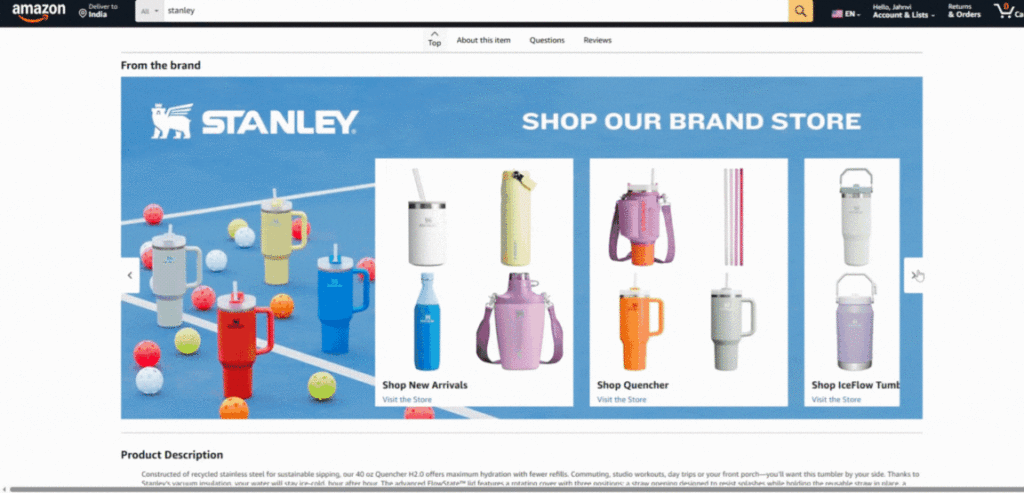
Initially, you are invited to explore their full ecosystem, everything from IceFlow tumblers and water bottles to coffee gear, barware, cookout essentials, and coolers, each with its own photo and shop link.
Following that, there is a short “Who We Are” section that introduces their 100+ year legacy, making it feel like you’re buying from an experienced brand with steady demand and providing insights for new sellers.
This approach transforms a simple product page visit into a comprehensive brand exploration that significantly increases the likelihood of multiple purchases and long-term brand loyalty.
(e) Timeline Posts
Timeline posts are another essential piece of a well-managed Amazon Storefront.
They help keep your store feeling fresh and active, not just for new visitors, but for returning shoppers too. Without them, your storefront can feel static, making it harder to highlight new arrivals or stay top of mind. Stanley demonstrates how to utilize these posts to craft meaningful, lifestyle-driven moments that extend beyond the product.
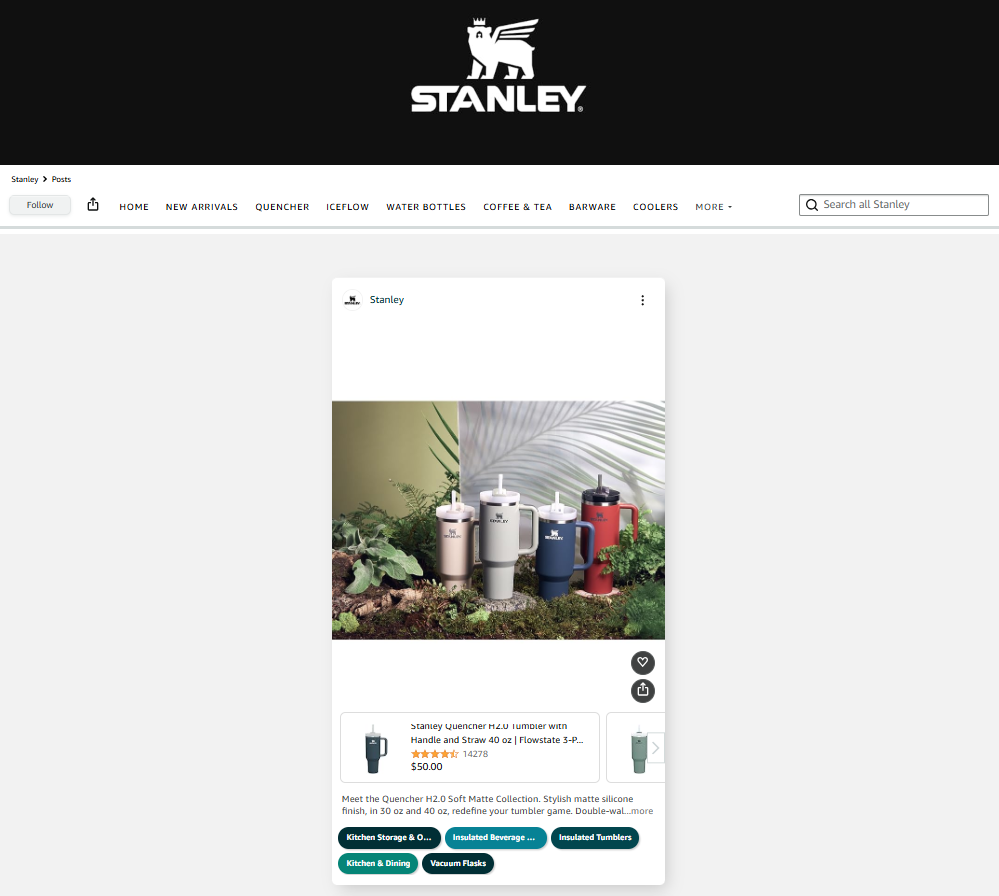
Rather than showing a product on a plain background, Stanley places their Quencher tumblers in a serene outdoor setting. The soft lighting, natural textures, and earthy colors make the post feel calm and intentional, like a moment someone would want to be part of.
This approach demonstrates Amazon success for kitchen storage and organization category.
What makes it work?
- It shows how the product fits into everyday life.
- The color choices appeal to different moods and personalities.
- The styling feels real and unforced, not overly commercial.
- All the important product details are mentioned in the caption, so there’s no need to click the link to understand the product.
This kind of storytelling enhances customer satisfaction and makes the experience feel more personal. It’s not just about selling a tumbler, but more about showing how it becomes part of someone’s daily routine. And that’s what makes timeline posts worth investing in.
2. Stanley – Amazon Product Listing & Amazon SEO
Another necessary aspect for Amazon’s success in the Kitchen Storage & Organization category is Amazon product listing & Amazon SEO, which requires thorough product research.
These are highly influential factors for how your product performs because they determine whether your listings even get discovered in the first place.
On Amazon, where dozens of similar bottles compete for the same keywords, even a well-designed product can go unnoticed without strong SEO. If your listing isn’t showing up for high-intent searches like “leakproof water bottle” or “insulated tumbler,” you’re losing sales before shoppers even see your brand listed on Seller Central.
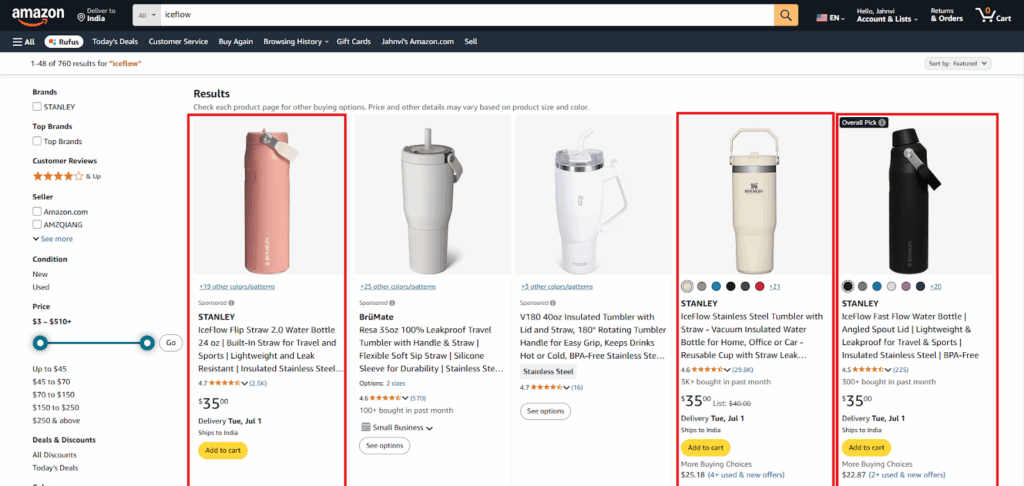
Once a shopper lands on your listing, that’s where your content strategy kicks in. Your title, images, bullet points, description, and A+ content all work together to explain the value, resolve objections, build trust, and push toward purchase.
In a marketplace where 70% of customers never scroll past the first page of results, Stanley has mastered the art of not just getting found but getting chosen.
Let’s look at the important things Stanley does to get noticed, starting from visuals to keywords and everything in between, to understand their Amazon Success for kitchen storage and organization category.
(a) Product Visuals & Image Sequence Strategy
High-quality visuals in your Amazon product listing are often the first and the most important interaction customers have with your product.
With no in-store experience, shoppers rely heavily on images to understand the product, feel confident about quality, and imagine how it fits into their lifestyle.
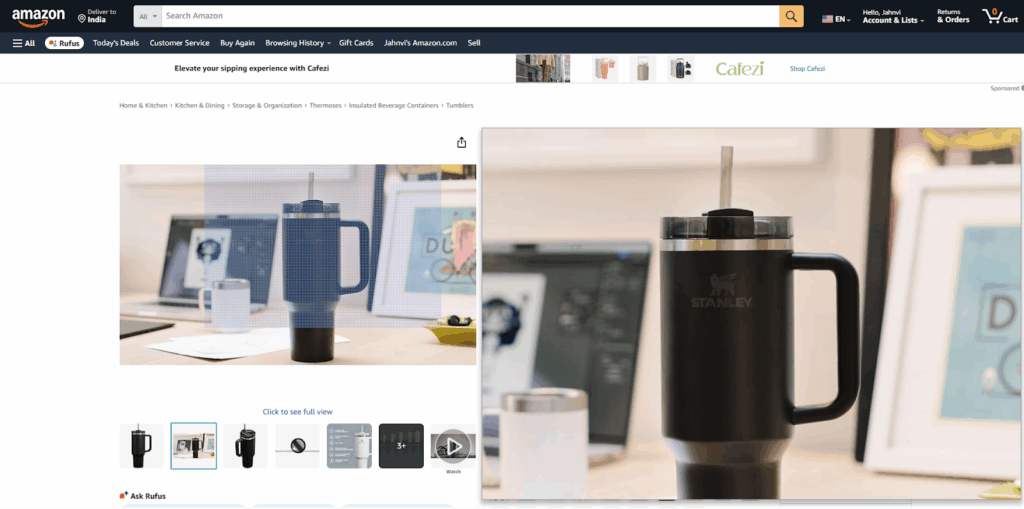
For Stanley, visuals do more than just look good; instead, they answer customer questions before they’re even asked. Their hero image is clean, well-lit, and immediately communicates what the product is—a premium tumbler, shown in use with their iconic logo front and center. It’s designed to grab attention while signaling quality and authenticity.
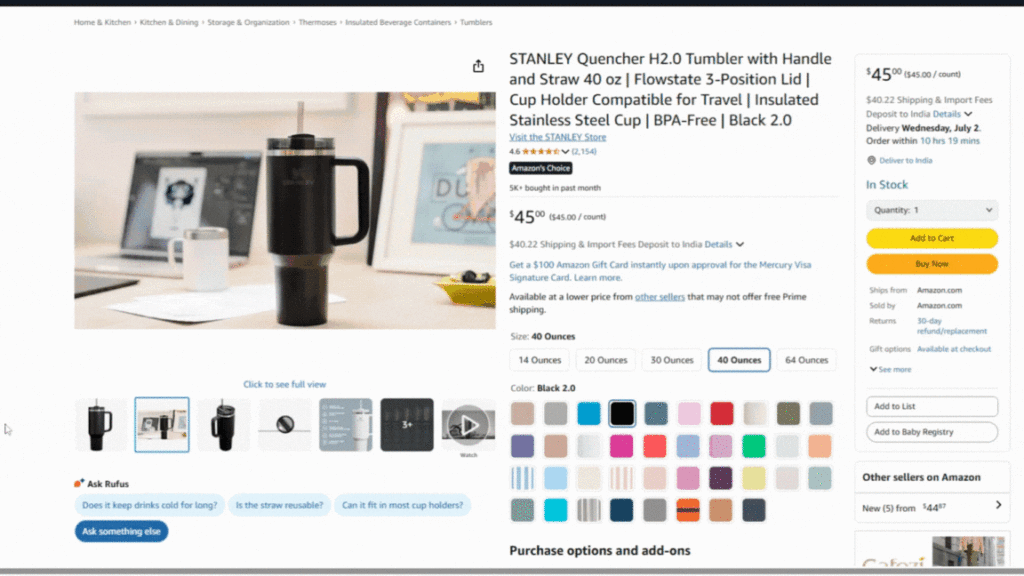
Secondary images take it a step further. You will see cutaway visuals explaining the double-wall insulation, comparison shots to highlight size and fit (like fitting into a car cup holder), and real-life scenarios like office desks or morning routines. These images reduce uncertainty and help customers picture how the tumbler fits into their daily lives.
A well-planned image sequence like this doesn’t just inform, but it builds trust and connection.
It replaces the physical experience, educates the buyer, and supports the brand story, leading to higher conversions. Stanley gets this right by making sure each image has a purpose and guides the shopper toward “Add to Cart.”
(b) Product Listing Title
Your product title and bullet points are the most important pieces of text on your Amazon listing, especially when competing against third-party sellers. They help your product get discovered in search and also convince shoppers to buy. But there should be a fine balance while adding keywords because if you add too many keywords, it becomes hard to read. And, if you focus only on readability, your product may not show up in search results.
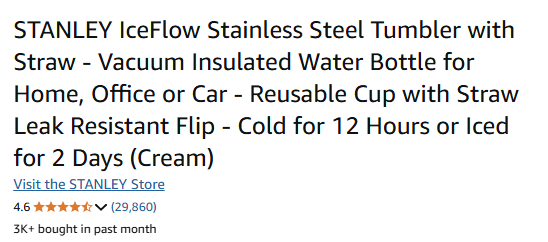
They’ve managed to include every relevant search term their audience might use:
“STANLEY IceFlow Stainless Steel Tumbler with Straw – Vacuum Insulated Water Bottle for Home, Office, Car – Reusable Cup with Straw Leak Proof, Dishwasher Safe”.
Here’s what they have included to achieve Amazon success for kitchen storage and Organization Category :
– Brand recognition (“STANLEY” in caps)
– Product types (“Tumbler,” “Water Bottle,” “Cup”)
– Key material (“Stainless Steel”)
– Top features (“With Straw,” “Vacuum Insulated”)
– Use cases (“Home, Office, Car”)
– Benefits (“Leak Proof,” “Dishwasher Safe”)
The title works for multiple search intents, whether someone is looking for a “water bottle,” “tumbler,” or “cup with straw”.
It’s keyword-rich without being spammy, and still reads clearly, which is essential for sellers looking to promote their own private-label products. Stanley leads with what matters the most: how it performs, where it fits in your day, and why it’s worth every penny. That’s how you write Amazon product listings that rank and sell.
(c) Product Descriptions & Specifications
Your product description is where you turn a shopper’s interest into action.
It’s not just a box you need to fill, but your chance to tell the full story and convince the customer why your product is the right choice. While bullet points give quick highlights, the description is where you explain benefits, clear up doubts, and make the buyer feel confident clicking “Buy Now”.
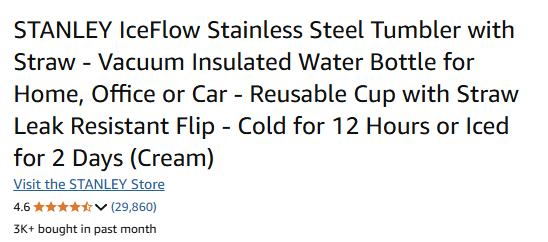
Stanley uses this space really well. Instead of just saying “30 oz capacity,” they say things like “Sip Faster, Spill Less: The FlowState 3-Position Lid is designed for quick hydration”.
That speaks directly to how people use the product in real life. It’s not just a feature, but a benefit that matters.

Every part of their description is written to reassure the shopper:
Stanley’s product descriptions feel more like a conversation with a premium brand than a boring list of specs, tapping into high demand from consumers.
They start by talking about real-life benefits, like “Whether you’re heading out on an adventure or hitting a spin class at home, this tumbler keeps your drink cold and ready”. Only after that do they get into the technical stuff. This approach drives Amazon success for Kitchen storage and organization category.

Stanley’s descriptions cleverly include trust-building signals and eco-friendly messaging, making the purchase feel like more than just a tumbler. It’s shown as both a smart upgrade for your daily routine and a responsible, planet-friendly choice. They also break down technical info into short, easy-to-read sections with simple headings.
This makes the information accessible to both detail-oriented researchers and quick decision-makers.
(d) Keyword Optimization & Search Ranking Factors
Amazon SEO operates on relevance, conversion, and authority signals. To make sure your listings and ads appear in searches where potential customers are looking, it’s crucial to use the same terms they use when looking for products like yours.
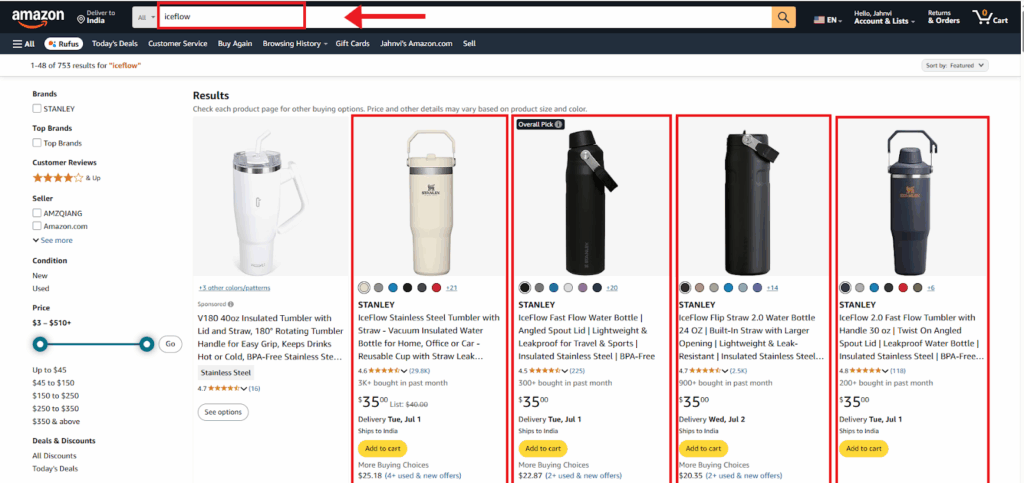
Stanley gets this right. Their IceFlow listings rank high for exact search terms customers use, like “IceFlow tumbler” and related product names. That visibility comes from thoughtful keyword placement across their titles, bullets, and descriptions.
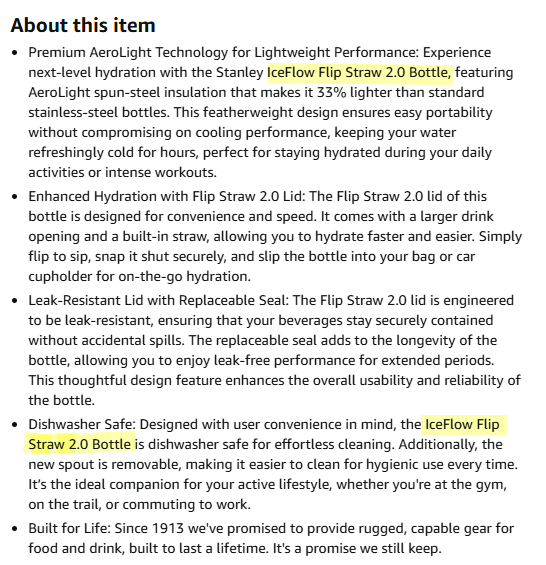
Scroll through any of the product listings by Stanley and you will see how naturally these keywords are incorporated. Words like tumbler, vacuum-insulated water bottle, leak-proof, and dishwasher safe don’t feel forced and seem like a part of clear, helpful content.
Stanley also includes lifestyle-focused terms like travel, gym, car, flip straw, and handle words that real shoppers use when browsing for such products.
There’s no keyword stuffing here, just clean copy that speaks to both the Amazon algorithm and the customer.
That’s how Stanley consistently shows up at the top, and why shoppers keep clicking it based on compelling sales data.
(e) Trust Factors
Trust signals help shoppers feel confident when deciding to buy. These include customer reviews, star ratings, how often a product is purchased, and the brand’s reputation. They also influence how Amazon ranks products in search results. In categories with many similar options, trust signals often help buyers choose by showing that others have purchased and liked the product.
Let’s look at how Stanley builds trust and achieves Amazon success for kitchen storage and organization category while keeping an eye on the latest market trends.
It starts with strong social proof. A 4.6-star average from over 2,600 ratings tells shoppers that thousands of people are happy with their purchase of products in this category. Additionally, the “#1 Best Seller” badge in Kitchen & Dining and the note that “4K+ bought in the past month” give shoppers instant reassurance from both other buyers and Amazon itself.
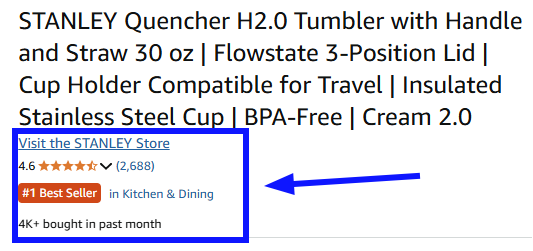
Next, the sustainability messaging adds another layer of trust. The Built for Life promise and lifetime warranty show that the brand stands behind its quality. Positioning their products as investments rather than disposable purchases.
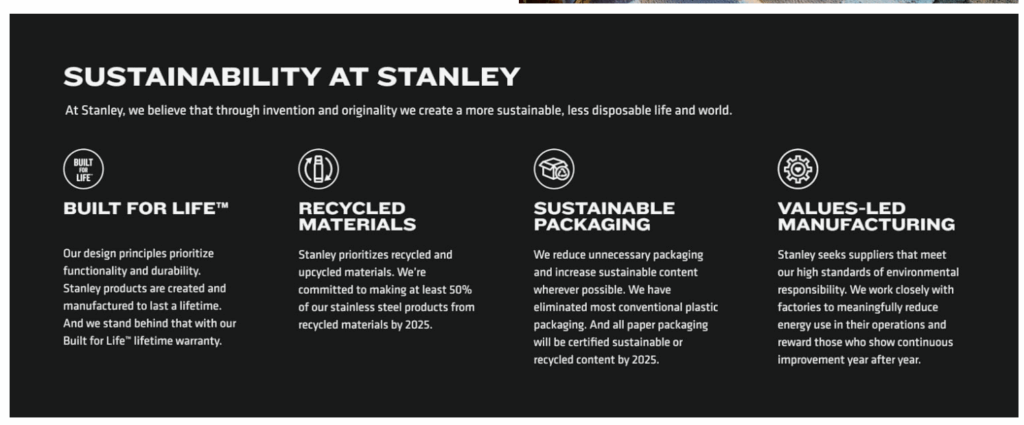
Their A+ content also highlights clear, measurable goals, like using 50% recycled materials by 2025 and cutting down on plastic packaging. These aren’t vague claims. Additionally, they show real progress and commitment, which helps build trust with conscious shoppers.
Even the way they talk about sustainability feels honest and human. Phrases like “we work closely with factories to reduce energy use” come across as real, not rehearsed. That transparency makes customers feel aligned with the brand’s values.
All of these trust factors, like reviews, badges, warranties, and values, work together to build credibility. And in a category as competitive as Kitchen & Dining, that’s what helps Stanley stand out and convert browsers into buyers.
(f) Upselling & Cross-selling
Upselling and cross-selling are not just sales tactics for an online store but are ways to help customers get more out of their purchase and essential strategies for Amazon success for kitchen storage and organization category. When done right, they increase order value and improve the shopping experience by offering a complete setup instead of just one item.
Stanley does this with purpose. Their “Frequently Bought Together” section isn’t a random mix. It pairs three well-matched products: the IceFlow Tumbler, the Quencher, and a matching silicone boot. They all share the same style, use case, and design language, making them feel like one complete set.
This approach shows customers the full lifestyle package. It’s not just about selling more, but about showing what goes well together. And when it’s all bundled neatly for $77.50, it feels like value, not just a higher price tag.
That’s smart upselling done with the intention that many successful Amazon sellers utilize, and it works.

Then there’s the “Customers Also Bought” section where Stanley gets strategic.
Instead of showing unrelated items, they use this space to highlight useful add-ons like replacement straws, carry pouches, and other matching accessories. All of this is showcased along with their hero product, available in various colors and product variations.
No off-brand distractions. Just thoughtful suggestions that keep the shopper engaged and browsing. It’s a smart way to reduce drop-offs and encourage customers to explore more of what Stanley offers.

What Stanley’s doing here isn’t just about adding extra products to the page, but about guiding the shopper through a thoughtful buying journey.
It feels natural, not pushy. Every suggestion is relevant, and every add-on feels like part of the bigger picture.
That’s how a simple product purchase turns into a complete brand experience.
(g) Discounts & Offers
Most shoppers are always looking for a good deal. On Amazon, discounts aren’t just a nice bonus, but a proven way to grab attention and drive action.
It’s not just about slashing prices. The real win comes from increasing the perceived value of the offer.
Stanley does this in a smart, intentional way. They don’t run discounts all the time, but when they do, it’s timely and impactful.
Take their Father’s Day Featured Deals, for example. The section was placed right under their brand banner during the seasonal window, which is easy to find and focused.
No clutter. Just standout products like tumblers, jugs, and their classic green lunchbox, all with bold “25% Off” tags and clear red pricing.
By combining relevance with urgency, Stanley made it easy for shoppers to say yes and take action fast.
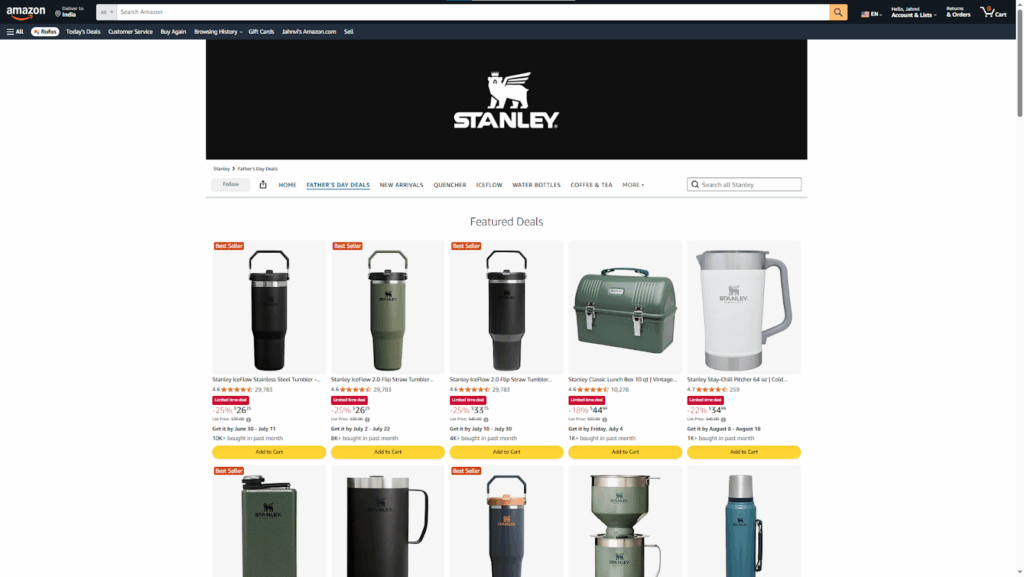
What made this work is how naturally the offers fit into the overall experience.
Everything stayed true to Stanley’s brand. The layout remained clean, the premium feel was intact, and the value was clear without making the products feel cheap. This brand consistency is essential for Amazon success for kitchen storage and organization category.
Also, these deals don’t last long. Once Father’s Day had ended, the section was removed. No outdated promos, just a fresh, timely storefront that stayed relevant.
This is smart discounting done right, supported by inventory management. It’s seasonal, strategic, and carefully built into the shopping experience.
Stanley, do not depend on the sale. Instead, they show up with the right offer, at the right time, in the right way, which is what drives Amazon success for kitchen storage and organization category.
That’s what builds trust and keeps the conversions coming.
(h) Product Variants
The last thing you want is for a shopper to leave your product page just because their preferred size or color isn’t available.
That’s where product variants come in, and that’s not just a nice option, but a key element to drive conversions.
Offering multiple sizes and colors isn’t just about giving choices. It’s about removing friction and helping shoppers feel in control. And Stanley offers a wide range of options for product variants, be it for colors or size.
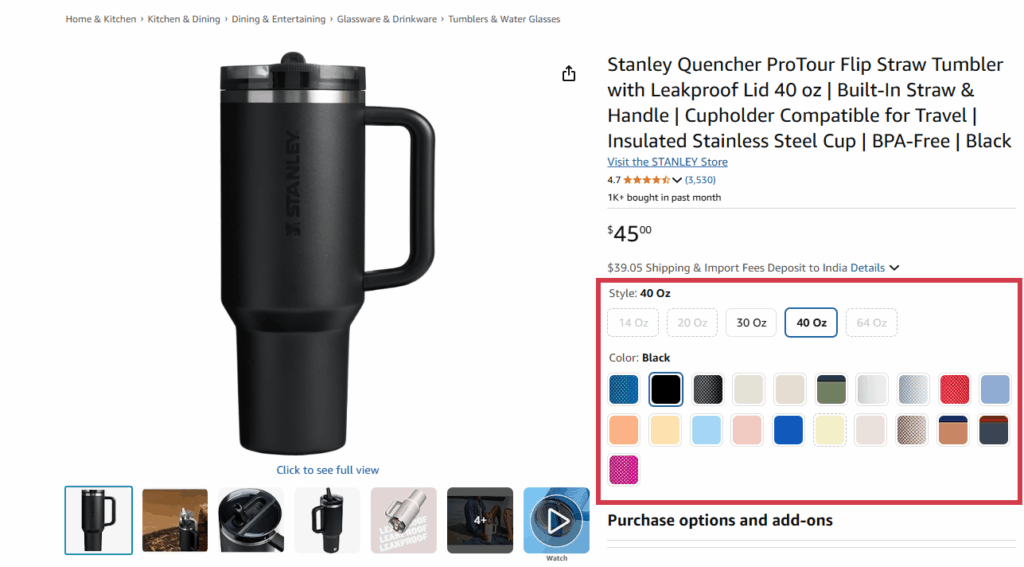
This kind of variant setup does three important things:
Keeps shoppers on the same page, with no need to open new tabs or search again.
;
Overall, what makes Stanley stand out is how intentional it all feels. The product stays the same, but the shopping experience is shaped around the customer. From the way they show options to how easily you can make a decision, it all adds up to a listing that doesn’t just inform but connects.
It’s a great reminder that a successful Amazon strategy is not about just showing up, but more about showing up thoughtfully, and that’s exactly what Stanley gets right in achieving Amazon success for kitchen storage and organization category.
3. Stanley – Amazon A+ Content
What makes Stanley’s Amazon presence stand out, especially in the competitive world of hydration products, is how thoughtfully their A+ Content is executed.
It goes far beyond product details and uses storytelling, lifestyle alignment, and high-quality design. This is not about showing bottles but about showing how they belong in someone’s life.
Stanley is a great Amazon A+ content example when it comes to blending emotional branding with practical product details, demonstrating excellence in the Home and Kitchen Category.
Let’s understand in detail how Stanley uses Amazon A+ Content to build trust, communicate value, and sell a lifestyle while achieving Amazon success for home kitchen category.
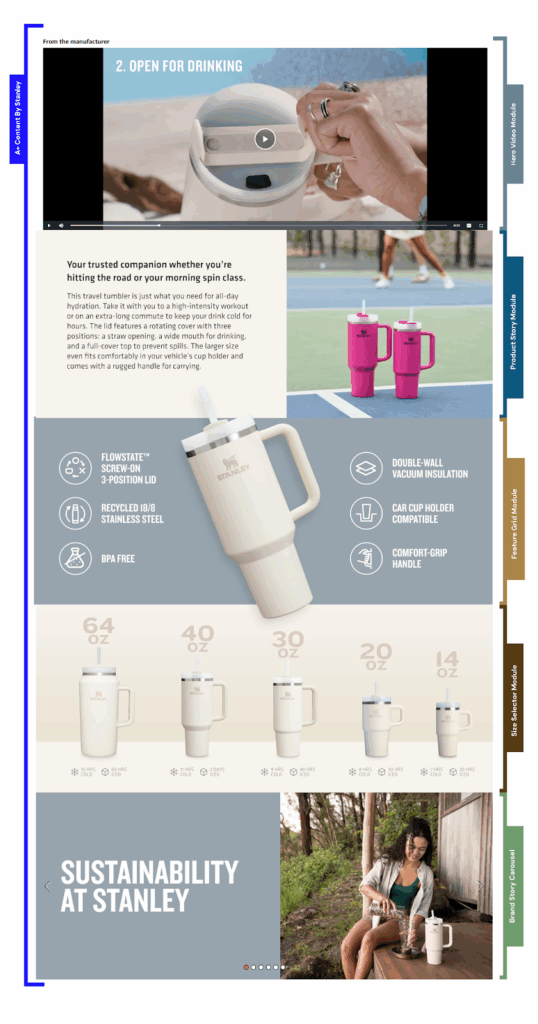
The top of the listing often begins with a rich, cinematic video, not a generic hero image. Each product line, be it Quencher, IceFlow, or AeroLight, features a unique video tailored to that product’s specifications and use case.
Next comes the shift from emotional pull to product clarity.
Right below the video, Stanley transitions smoothly into utility. Key features are laid out using smart iconography and minimalist graphics. Instead of giving shoppers too much to read, they present highlights like:
- FlowState 3-Position Lid
- Double-Wall Vacuum Insulation
- BPA-Free Stainless Steel Build
You can see that each point is concise, visually clean, and easy to scan, even on mobile, which is crucial for Amazon Success for kitchen storage and organization category and helps attract customers.
The entire layout is built around simplicity. Neutral tones like white, beige, and Stanley’s signature cream keep the visuals cohesive and calm. Nothing feels out of place. The graphics guide the eye, the text informs, and together, they build trust.
If you’re looking for a strong Amazon A+ content example to model your brand on, Stanley is a benchmark worth studying for Amazon sellers looking to succeed in profitable Amazon categories.
Stanley’s lifestyle imagery shows their bottles in real settings, which makes the product feel like part of daily life.
What’s smart is how they combine lifestyle and product info in the same modules, balancing mood with message.
Each section has a purpose:
- Videos build emotion
- Icons simplify features
- Modules tell the story
- Design builds trust
It’s clean, mobile-ready, and intentional. That’s how A+ content should work for high-demand products in competitive Amazon categories.
(b) Comparative Charts & Feature Matrices
We’ve all been there. Opening multiple tabs, flipping between listings, trying to figure out which option fits best.
Stanley takes advantage of this behavior and removes the usual friction by making comparisons easy and intuitive.
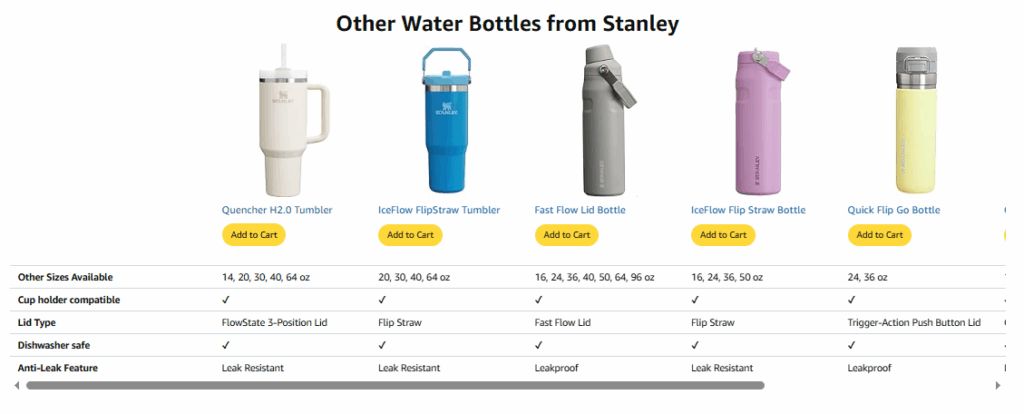
Their comparison section is purposefully built. Instead of overloading shoppers with specifications, it highlights the features that matter like size, portability, compatibility, and convenience.
You will see the full Quencher lineup at a glance, from 14oz to 64oz. Offering a clear message that there is a Stanley product for every activity, showcasing their broad range of quality products.
Photos are aligned at an angle to make visual comparison effortless. Shoppers can quickly compare size and specifications without needing to read fine print. A key factor in Stanley’s Amazon success for Kitchen storage and organization category.
Below the images, a clean feature grid answers key questions:
- Other Sizes Available
- Cup Holder Compatible
- Lid Type
- Dishwasher Safe
- Anti-Leak Feature
That first row, “Other Sizes Available”, acts as a soft cross-selling opportunity, guiding shoppers toward alternatives without clutter or pressure. Details like dishwasher compatibility might seem small, but they eliminate hesitation. Instead of digging through reviews, shoppers get instant clarity.
Stanley uses this module to remove guesswork, reduce bounce, and guide faster purchase decisions. It’s not just smart content, but a conversion strategy that enhances customer satisfaction and drives sales performance.
(c) Enhanced Copywriting & Value Propositions
On Amazon, your copy needs to grab attention quickly and make an impact right away. As Amazon shoppers scroll quickly, skim for answers, and make decisions in seconds.
Stanley understands this and uses copy not just to describe the product, but to connect with the shopper and drive action.
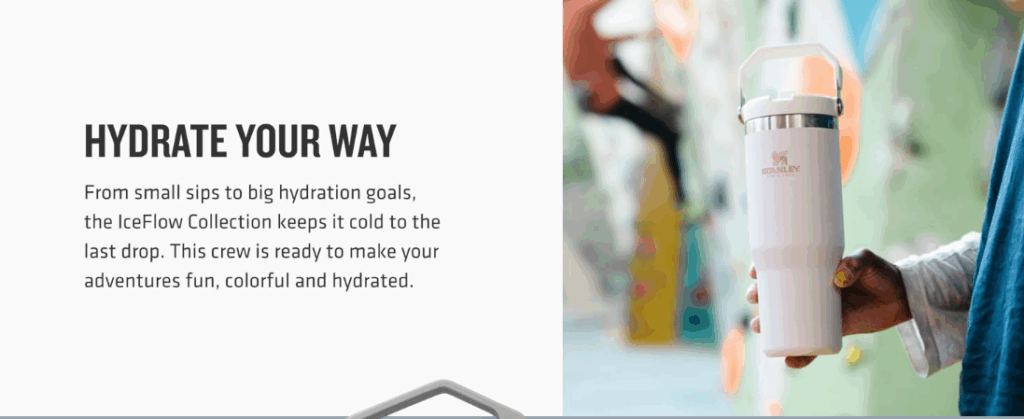
A standout example comes from their IceFlow Collection. The headline says it all:
“Hydrate Your Way”.
It’s not just a feature statement, but an empowerment. Stanley positions the product as adaptable to your lifestyle, whether it’s casual sipping or hitting hydration goals.
The supporting copy gives the product its own voice:
“This crew is ready to make your adventures fun, colorful and hydrated”.
It’s playful, direct, and clearly written for a younger, active audience. It gives the collection its own identity, which feels vibrant, social, and in motion.
The image complements the message. The tumbler is front and center, but the energy is in the background, which has colorful settings, casual movement, and real-life use.
Together, the copy and imagery establish IceFlow as more than just a bottle. It’s a companion built for everyday routines and adventures.
The voice feels honest, along with the message, and works together to tell a story that fits your lifestyle while supporting Stanley’s continued Amazon success for Kitchen storage and organization category and maintaining steady demand.
(d) Mobile Optimization
With over 70% of Amazon shoppers browsing on mobile, optimizing for small screens isn’t optional, but essential.
Stanley approaches mobile design with intent, treating it as the primary shopping experience, not a secondary version.
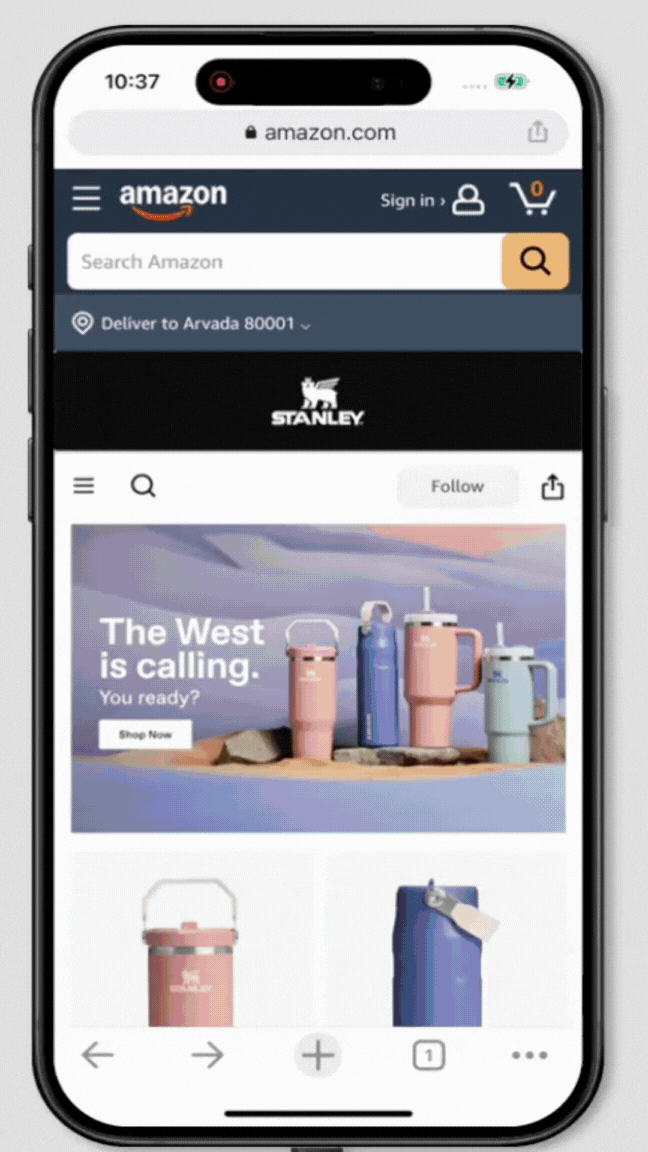
Their mobile A+ Content maintains the same impact and clarity as a desktop but is customized for on-the-go browsing. Here’s what stands out:
- A clean image-to-text ratio ensures nothing feels crowded
- Fonts are crisp and readable with no zoom needed
- Product visuals remain sharp and scroll smoothly
- Touch-friendly layout supports easy thumb navigation
- Design elements stay consistent with brand identity
Even brief interactions feel smooth and intuitive, reducing friction at every touchpoint. Stanley’s mobile execution works because it supports the full buyer journey:
- Awareness: Lifestyle images immediately show how the product fits into real-life
- Consideration: Comparison charts and icons deliver quick clarity on key features
- Decision: Copy answers to common objections upfront (e.g., dishwasher-safe, leakproof)
- Purchase: Seamless navigation helps customers act without second-guessing
It’s a smart, mobile-first sales funnel, disguised as product content. Every piece has a purpose, and every moment is designed to keep the shopper moving forward. A hallmark of true Amazon success for Kitchen storage and organization category is understanding search volume and market trends.
This is what mobile A+ content should do: simplify, guide, and convert. Stanley doesn’t just meet expectations but sets a higher bar for other competitors in profitable categories.
4. Stanley – Additional Amazon Account Management Aspects
Stanley’s Amazon success for kitchen storage and organization category is not just about strong design or compelling copy but also about what happens behind the scenes to maintain consistent demand.
Their real advantage comes from the way they manage their Amazon presence with precision, with precision, using tactics most shoppers never see, but that directly impact visibility, ranking, and long-term performance.
From smart ad placements that keep Stanley’s products front and center to real review management that builds trust at scale, every move behind the scenes is intentional.
This section explores the backend strategies Stanley uses to stay ahead because success on Amazon isn’t just about looking good. It’s about performing better and maximizing profit margins.
(a) Amazon Advertising Strategy
Stanley’s Amazon ad strategy is not just well-educated, but designed to dominate that starting with a premium placement right at the top of search results.
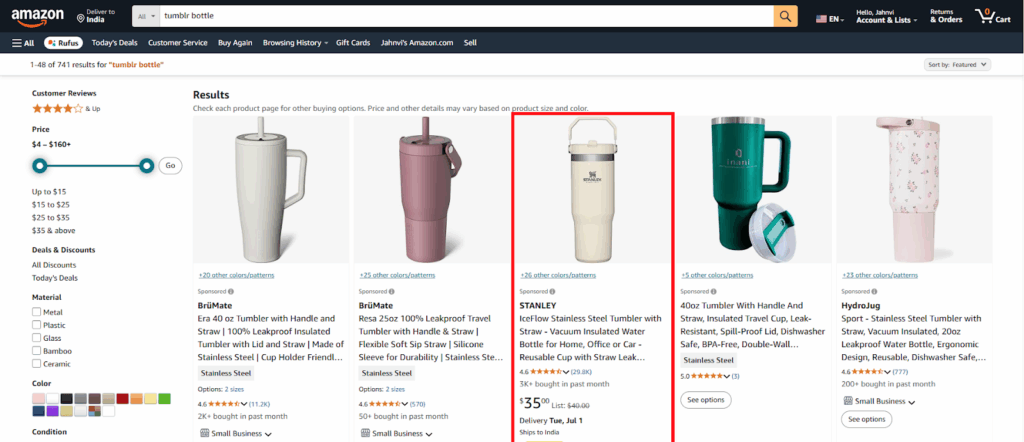
On Amazon, visibility comes at a price. Even the best-selling products won’t get noticed without ad support. Sponsored placements have become essential for staying competitive, and Stanley uses them exactly where they matter most.
Most shoppers never scroll beyond the first page. By consistently appearing at the top, Stanley ensures its products stay in front of buyers. These placements also contribute to better organic ranking, creating a flywheel effect where visibility and conversions strengthen each other over time.
Instead of relying solely on branded search terms, Stanley targets broader keywords like “Tumblr bottle”. This allows them to engage shoppers earlier in the funnel and reach people who haven’t yet committed to a specific brand.
To build trust quickly, their listings are supported by strong social proof:
- 4.6-star rating with nearly 30,000 reviews
- “3K+ bought in the past month” tag
These trust markers reduce hesitation and add urgency, making the product feel both reliable and popular.
Stanley’s paid strategy isn’t just about showing up, but about owning the space and converting attention into long-term growth, demonstrating how profitable sellers approach Amazon categories.
(b) Customer Reviews, Ratings & Response Management
Stanley’s review game is strong, and it’s not by accident. With a 4.7-star average from over 2500+ global ratings, it’s clear their products consistently deliver, especially for something people use every day like a tumbler.
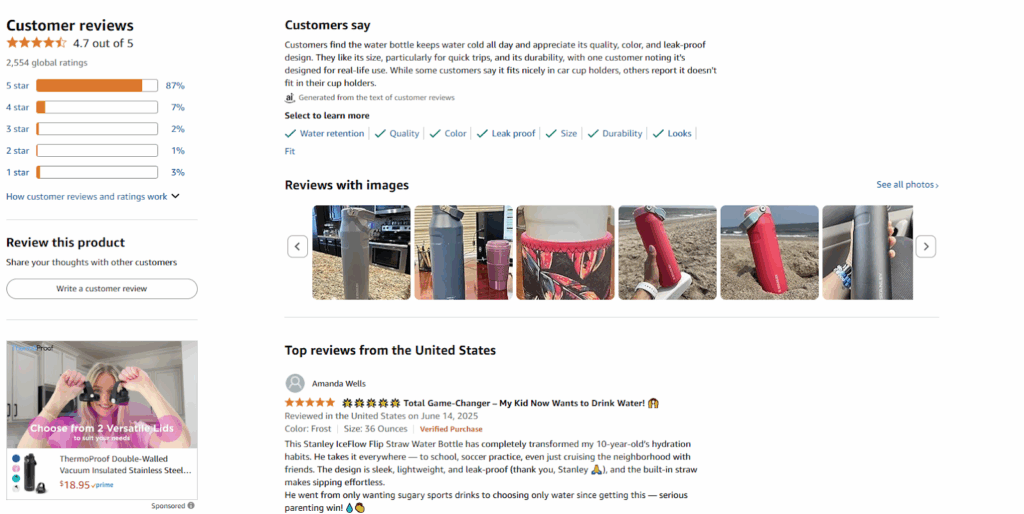
What stands out is how naturally the reviews promote the benefits Stanley wants you to remember. In the “Customers say” section, phrases like “keeps water cold,” “well-made,” and “great shape and design” show up again and again. It’s real feedback, coming straight from customers, and it’s making a big impact.
Beyond star ratings, the review filters highlight what people actually care about: durability, leak resistance, size, and color. These aren’t just product specifications; they are the things shoppers are thinking about before they hit “Buy Now”.
And then there are the photos. One customer photo, not perfectly posed, shows the tumbler in real life. That raw, unfiltered shot builds more trust than any polished studio image ever could.
It’s relatable as well as specific. And it speaks to the shopper who sees themselves in that moment.
Stanley’s reviews don’t just sound good, but connect. They turn happy customers into storytellers and browsers into buyers, driving repeat purchases and customer satisfaction.
Conclusion – Stanley’s Success for Home & Kitchen Category
That was a successful Amazon brand showcase for Stanley and their standout presence in the Kitchen Storage and Organization Category, demonstrating their ability to drive repeat purchases.
After discussing Stanley’s strategy, it’s clear that winning on Amazon comes down to creating a consistent, customer-first experience.
What really stands out is that there’s nothing overly complicated here. They’re not relying on tricks or huge budgets. They just focus on getting the basics right and doing them well.
It all starts with quality products. And they keep improving by sticking to that same standard.
Every choice they make seems to ask: Will this help the customer?
When you keep things that are simple and consistent, finding success on Amazon becomes a lot more doable and can significantly boost eCommerce sales.
If you want to bring the same clarity and consistency to your own Amazon store, we can help you get there.
Maintain Your Amazon Seller Account Better With Us!
We’re Mint Your Store, and we help brands like yours manage and grow their Amazon presence, without the guesswork.
Whether you’re just starting out or ready to scale, we’re here to make sure everything behind the scenes is taken care of, so your store can perform the way it should.
Here’s how we can help:
- Day-to-day account management
- PPC campaigns that drive real results
- Optimized listings that speak to shoppers and search engines
- Storefront and A+ content that tells your brand’s story
- Inventory, reviews, and performance tracking, are all under control
Let us handle the bacend while you focus on building your brand.
Want to run your Amazon account with more clarity, consistency, and confidence?
Reach out today, we would love to help.
